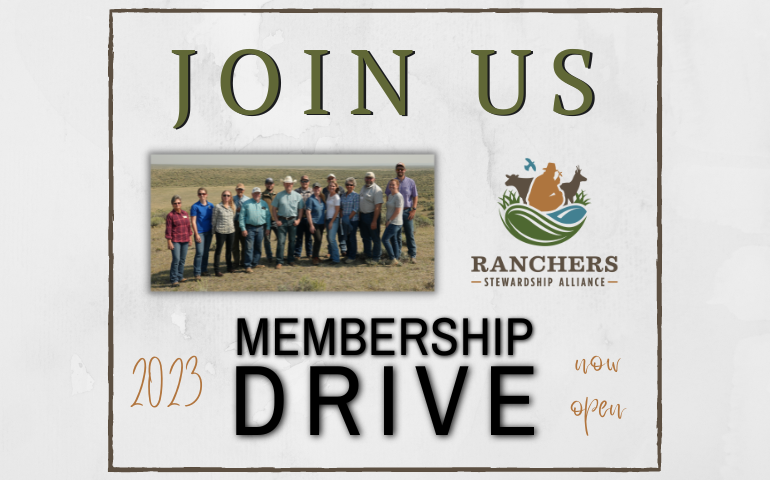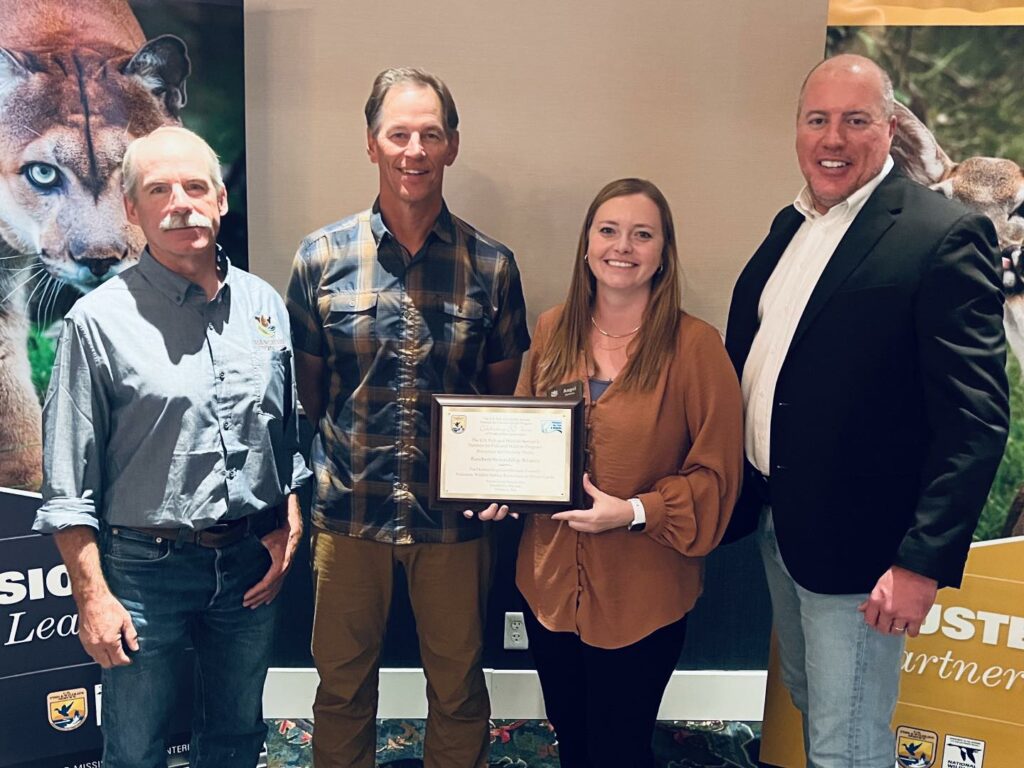Mike Borgreen, Glasgow BLM, Receives RSA “Gold Star Award”

The Ranchers Stewardship Alliance (RSA) is proud to announce that Mike Borgreen, a dedicated biologist and current Acting Field Manager from the Glasgow Bureau of Land Management (BLM) has been awarded the 2023 RSA Gold Star Award for his exceptional contributions to conservation and land stewardship. The RSA Gold Star Award is presented annually to […]
RSA Launches Inaugural Membership Drive

When Ranchers Stewardship Alliance formed in 2003, we started with the desire to keep grasslands along the Northern Great Plains intact and its agricultural producers flourishing. That desire has continued throughout the last 19 years of the organization’s history. Today, the Ranchers Stewardship Alliance is committed to supporting our ranching, conservation, and rural communities as […]
RSA Receives National Recognition

An amazing and unexpected honor, RSA was recently awarded the “Outstanding Partner Award” from the U.S. Fish and Wildlife Partners for Fish and Wildlife Program. The Program provides free technical and financial assistance to landowners, managers, tribes, corporations, schools and nonprofits interested in improving wildlife habitat on their land. Along with the fancy plaque, RSA […]
2021 Ranchers Stewardship Alliance Annual Report
While 2021 was a year full of challenges and trials, it was also a year where we saw the intersection of “ranching, conservation, and communities” truly create “a winning team.” The severe drought, not just in our northern Montana counties, but across a large sweep of the region, brought with it feed shortages, water concerns, […]
2021 Impact Report
Hi friends, We’re so grateful that you’ve been a part of this Ranchers Stewardship Alliance Community over the past year. Together, we’ve made progress in our aim to help multi-generational and beginning ranchers build the collaborative, trusting relationships and community-based solutions we need to create healthy working landscapes and vibrant rural communities. Here are a […]
Join the Winning Team: Executive Assistant position now open!
This position has been filled! Ranchers Stewardship Alliance Executive Assistant Ranchers Stewardship Alliance is a fast-growing, rancher-led organization based in Malta, Montana. We exist to help multi-generational and beginning ranchers build the collaborative, trusting relationships and community-based solutions we need to create healthy working landscapes and vibrant rural communities. Ranchers Stewardship Alliance is an […]
Join the Winning Team: Communication & Outreach Leader position now open!
APPLICATION SUBMISSIONS NOW CLOSED, June 8, 2022 This position has been filled Ranchers Stewardship Alliance: Communications & Outreach Leader Ranchers Stewardship Alliance is a fast-growing, rancher-led organization based in Malta, Montana. We exist to help multi-generational and beginning ranchers build the collaborative, trusting relationships and community-based solutions we need to create healthy working landscapes and […]
Volunteer fence maintenance a win-win for landowners, big game
By Martin Townsend, RSA Lands Coordinator This summer, an effort between conservation organizations and Blaine County ranchers at the Louie Petrie Ranch north of Turner, Montana offered two days of hands-on learning, practical ranch work, and collaboration to benefit ranching and pronghorn migration in the region. The Obrecht family hosted more than 40 volunteers […]
2020 Ranchers Stewardship Alliance Annual Report
In the midst of severe drought, we’re constantly reminded of the power of deep roots. The Ranchers Stewardship Alliance has been working to solve problems and create a brighter future for our ranches, our rural communities and the wildlife that depends on this land for more than 17 years. Our organization has experienced some incredible […]
NextGen Fencing: The Future of Pasture Management
Montana rancher shares lessons learned with virtual cow collar technology in free May 18 webinar. By Laura Nelson, Ranchers Stewardship Alliance He never thought he’d see it in his lifetime. “This started with a conversation with a friend in the wildlife community,” Montana rancher Leo Barthelmess said. They discussed the challenges old, barbed—wire fencing posed […]